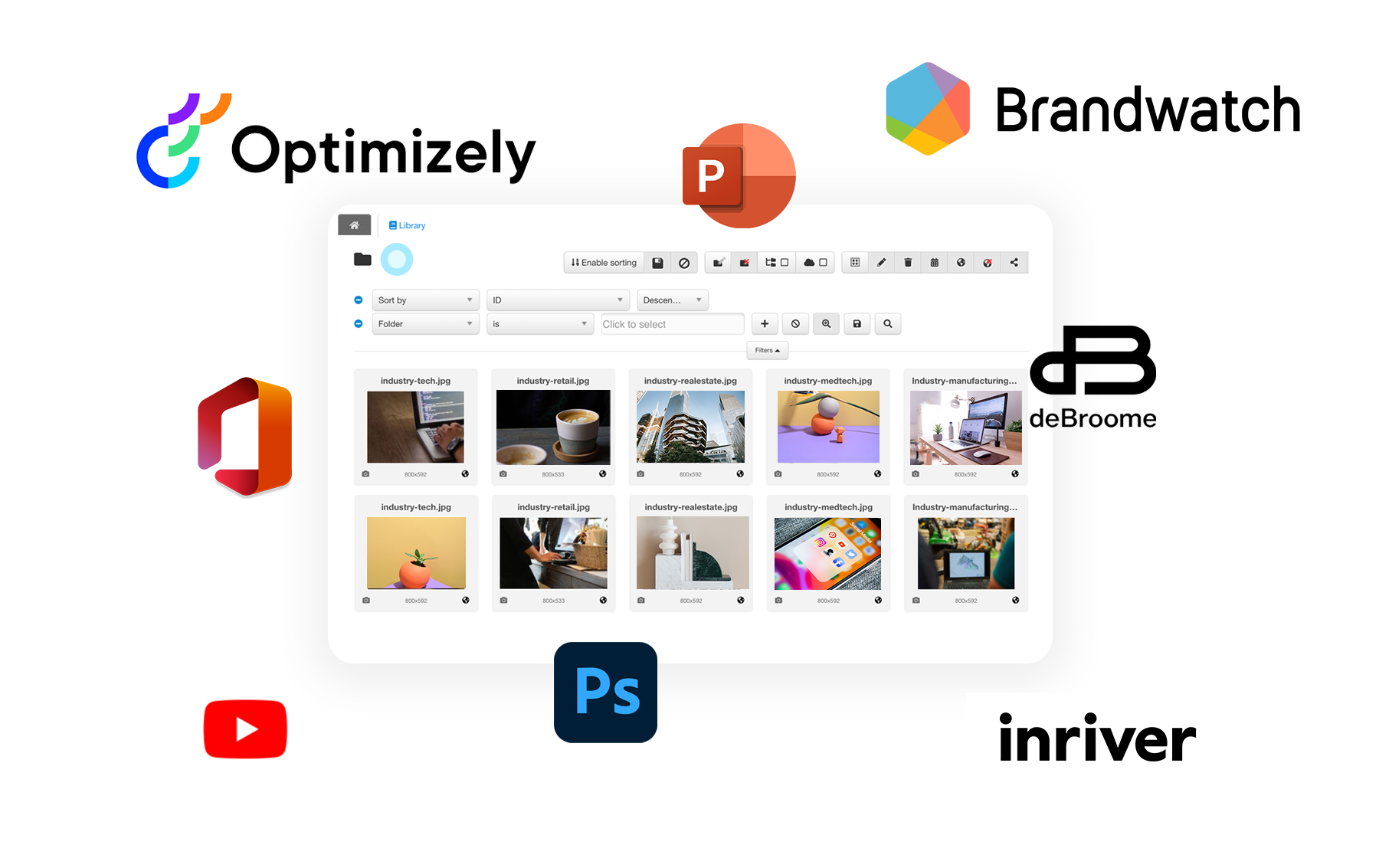As businesses grow, they often find themselves dealing with more and more data. This can be overwhelming, especially when the data is spread across different systems and platforms. Getting a Digital Asset Management system alone doesn't always solve these problems.
That's where DAM integration comes in.
When businesses integrate their DAM system with other tools and systems they can streamline their data management and communication processes, leading to more efficient workflows and better decision-making.
Contents:
- What is a DAM integration?
- Why is DAM integrations important?
- Benefits of DAM integration
- Examples of QBank DAM integrations
What is a DAM integration?
A DAM integration refers to the process of connecting a Digital Asset Management (DAM) system with other third-party software applications.
This integration enables the DAM system to communicate and exchange data with these other systems, making it possible to access and use data from various sources in a more streamlined and efficient way.
Why is DAM integrations important?
Without DAM integration, businesses may struggle with siloed data, where different departments have access to different sets of data, and communication between them is limited. This can lead to inefficient workflows, wasted time, and missed opportunities.
On the other hand, a DAM integration allows for seamless communication and data exchange between different departments and systems. For instance, integrating Adobe InDesign with your DAM would give the team instant access to approved content and enhance the overall customer experience.
Benefits of DAM integration
Improved Communication
With DAM integration, businesses can break down data silos and enable better communication between different departments. This can lead to faster decision-making and more efficient workflows.
Enhanced Collaboration
DAM integration also promotes collaboration between teams. By sharing data across systems, teams can work together more effectively, resulting in better outcomes for the business.
Efficient Data Management
Integrating a DAM system with other software applications can make it easier for businesses to manage their data. This can lead to a more efficient workflow and reduce the risk of errors or duplication.
Better Customer Experience
By integrating a DAM system with an eCommerce platform, businesses can create more engaging product listings and enhance the overall customer experience. This can result in increased customer satisfaction and repeat business.
Examples of QBank DAM integrations

Brandwatch DAM integration
Brandwatch is a powerful social media monitoring and analytics tool that allows businesses to track and analyze their online presence. By integrating Brandwatch with QBank DAM, businesses can streamline their workflows and effectively manage their brand assets, such as images, videos, and logos.
This QBank DAM integration enables users to easily access and use their brand assets within the Brandwatch platform, leading to more efficient social media management and improved brand consistency.
Inriver DAM integration
The integration between QBank DAM and Inriver allows users to leverage the strengths of both systems for managing their digital assets and product information in a more efficient and streamlined manner. It enables users to automate certain tasks, such as updating metadata or product information, which can save time and reduce errors.
Overall, the integration between QBank DAM and Inriver provides a more comprehensive solution for managing both digital assets and product information, which can help organizations to improve their marketing efforts and increase sales.
Optimizely DAM integration
The integration between QBank DAM and Optimizely allows users to leverage the strengths of both systems for optimizing website experiences with high-quality digital assets. With this integration, users can easily access and use digital assets stored in QBank DAM directly within the Optimizely platform to create personalized and engaging website experiences for visitors.
For example, a user can select relevant images or videos from QBank DAM and use them to create personalized landing pages, product pages, or other website experiences in Optimizely. This can help to increase engagement and conversion rates by providing a more visually appealing and relevant website experience for visitors.
Furthermore, the integration between QBank DAM and Optimizely also allows users to automate certain tasks such as updating images or videos in Optimizely based on changes made in QBank DAM. This can help to ensure that website experiences remain up-to-date and relevant while reducing errors and streamlining workflow processes.
PowerPoint DAM integration
The integration between QBank DAM and PowerPoint allows users to leverage the strengths of both systems for creating high-quality and engaging presentations with ease. With this integration, users can access and use digital assets stored in QBank DAM directly within PowerPoint to create more visually appealing and impactful presentations.
For example, a user can search and select relevant images or videos from QBank DAM directly within PowerPoint, without having to leave the platform. This can save time and streamline the workflow process for users who need to create presentations with high-quality digital assets.
Conclusion
DAM integrations provides a solution to the problem of siloed data and promotes efficient communication and collaboration between teams.
By using DAM integrations, businesses can enhance their workflows, make better decisions, and ultimately provide a better experience for their customers. A win win so to say.